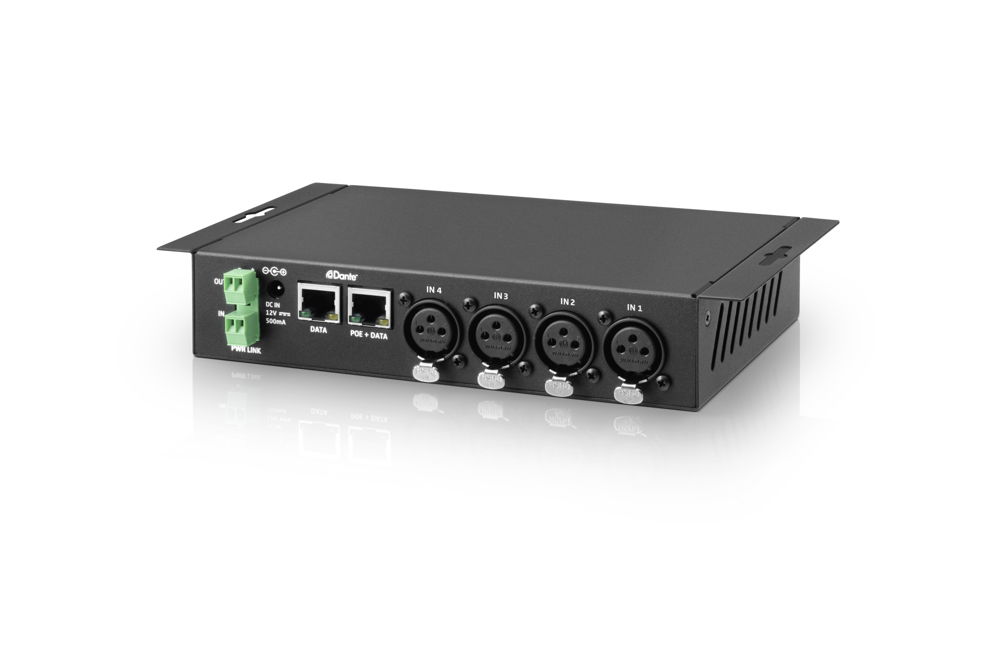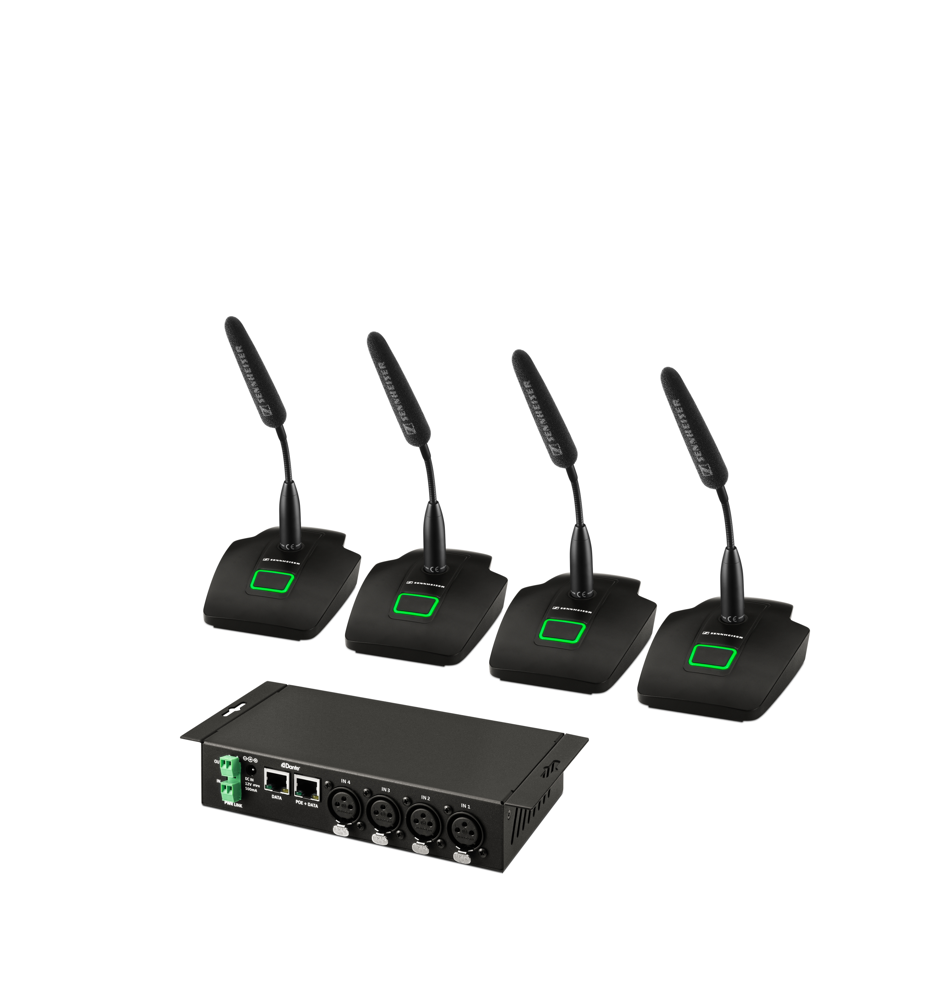ISE 2018
6 February 2018

Sennheiser – Expert-Interview on “Dante™ by Sennheiser” with Kai Tossing
Mr. Tossing, Sennheiser has been working with Audinate, the producer of Dante™, since 2014. What are the major advantages of Audio Over IP Networks and Dante™-enabled products in particular?
The advantages of Audio over IP (AoIP) networks are primarily related to their user-friendliness and flexibility. Instead of having to install countless, heavy cables individually as in the past, today we can usually rely on an existing network infrastructure. But even if this infrastructure is not available, a network cable can be laid quickly.
Dante™ is, in a sense, what the USB port is to the computer world in AoIP networks. With Dante™, manufacturers can connect a wide variety of input and output devices. Thus, the user has flexibility in their choice of devices - be it a microphone, a mixer, a DSP processor for spatial equalization, a speaker or a recording device – everything can be easily integrated into the existing infrastructure via the network connection.
Dante™ has become the de-facto industry standard. The product manufactured by Audinate is used by almost all relevant manufacturers. The customer therefore has the freedom to choose devices and can always be sure that it will work as the technology comes from a single source.
In which areas of the AV industry is Audio Over IP (AoIP) mainly used?
On the one hand, today, AoIP is used for live installations, because it significantly reduces setup time. On the other hand, AoIP is increasingly used in company buildings or universities. In most cases these already have a corresponding infrastructure, so that microphones and signal processors can be easily integrated into the existing network and infrastructure.
In both application scenarios, the user benefits from the fact that the hardware only has to be connected to the network. All other settings – for example, which signal should be routed to which PA system – are effortlessly made via the software.
Which Sennheiser products can currently be integrated into a Dante™ network?
In its cooperation with Audinate, Sennheiser is focusing on its own core competence in the professional field: microphones and wireless microphone systems.
We have started with the flagship among Sennheiser digital wireless systems, the Digital 9000 - which can be optionally equipped with a Dante™ module; the new Digital 6000, which is also available in a Dante™ version, or the SpeechLine Digital Wireless System, which in combination with the SL DI 4 XLR Dante™ interface can feed the signals of up to four microphones into a Dante™ network.
The SL DI 4 XLR Dante™ interface works as an analogue-to-digital audio converter, allowing any Sennheiser microphone to be integrated into a Dante™ network - including speech microphones such as the ME 36 gooseneck microphone, the MEB 114 boundary microphone, and also the MK 4 vocal microphone. The benefit to customers is obvious - they do not need to buy new equipment to use Dante™.
In addition, Sennheiser will continuously check which new products qualify for integration with Dante™ and then make these available in a corresponding Dante™ version.
Sennheiser also offers three pre-assembled Dante™ kits:
The Dante™ Kit MEB 114-S - a combination of four MEB 114-S boundary microphones and an SL DI 4 XLR Dante™ interface. Also available: the Dante™ Kit ME 36, consisting of four MAT 133-S table stands with ME 36/MZH 3015 gooseneck microphones and an SL DI 4 XLR Dante™ interface. And, last but not least, the Dante™ Kit MEG 14-40, consisting of four MAT 133-S table stands with KE 10/MEG 14-40 gooseneck microphones.
Can customers be sure that they are buying "future proof" Dante™ products? How do you handle software updates?
Forecasting standards is always a tricky thing to do, but there are a number of very good reasons why customers should not be concerned that their Dante™ products will one day suddenly cease to work:
Currently, Dante™ is able to connect more AV devices via an audio network than any other standard in the AV industry. For this reason, all major manufacturers rely on Dante™. This fact alone indicates that no other standard will be established in the near future.
In addition, Audinate continues to evolve Dante™ and ensures compatibility with the underlying AES67 standard.
How safe are audio over IP (AoIP) networks with Dante™?
Here, we are talking about network security in general. Dante™ does not make a network safer or more insecure. But tools such as Dante™ Domain Manager allow you to monitor Dante™'s usage on the network. User rights can be managed or a closed configuration can be protected against changes. In addition, all security mechanisms and practices of network technology apply, since Dante™ streams are only one form of data in the network.
What is the future in the field of audio over IP? Which trends do you recognize?
The interaction of software and hardware is becoming increasingly important in all areas. While in the past audio solutions often separated both areas into silos, today the advantages of synergy effects are apparent: Meanwhile software is driving the integration of hardware – and not the other way around. This means that ease-of-use is at least as important as the product itself. We believe that this trend is a good thing for the industry - usability is key to a wide audience, and it also simplifies control. This allows users to control exactly what they want to achieve. Sennheiser is championing this trend, for example, with the Sennheiser Control Cockpit Software. It is available on a web browser on all smartphones, tablets and laptops and simplifies the operation and setup of various Sennheiser products.
Sennheiser - Dante Interview Kai Tossing_EN.docx
DOCX - 1.2 Mb
Sennheiser - Dante Interview Kai Tossing_EN.pdf
PDF - 243 Kb






